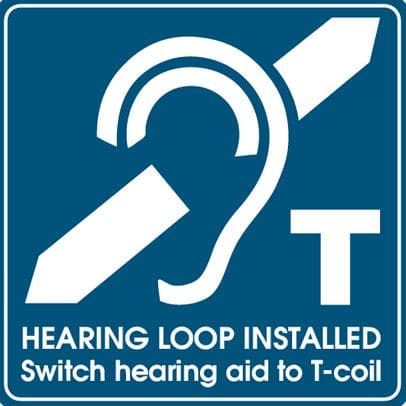Please, Rethink Telecoils!
The Way I Hear It
Gael Hannan (The Way I Hear It) is a hard of hearing advocate that understands both sides of the fence between the consumer and the hearing health care professional. Gael’s columns are humorous, sometimes cutting, but always constructive and to the point.

This issue should be important to you, the hearing care professional, because it’s really important to us, your clients, the people with hearing loss. There are thousands and millions of us in this country who are jumping for joy at the passage of this act.
Because, with the enactment of the Accessible Canada Act, we hope that what we need in order to hear better, to participate better and to live better, will become standard offerings in Canadian society. To get full access to almost anything these days involving media and communication, we need text interpretation in all its forms, including captioning, as well as Bluetooth and telecoils/looping.
I recently wrote an article for HearingHealthMatters.org, which became one of the most-viewed pieces I’ve written over the past eight years, “Stop Trash-Talking Telecoils”. Here it is Reprinted with permission.
I don’t know how to say this more clearly: Telecoils in my hearing aids have made my life better.
 Better, happier, easier, and more connected. And I’m not the only one – there are gazillions of us. Because of this positive experience, it’s frustrating for us – the hearing loss advocates and international organizations – to hear that audiologists are advising against telecoils, saying they’re ‘old technology’ and here, try this newest, greatest thing!
Better, happier, easier, and more connected. And I’m not the only one – there are gazillions of us. Because of this positive experience, it’s frustrating for us – the hearing loss advocates and international organizations – to hear that audiologists are advising against telecoils, saying they’re ‘old technology’ and here, try this newest, greatest thing!
Without telecoils, I wouldn’t have been able to use the phone as well as I have for the past 20 years. I still use it to talk on the phone, both cell and landline, daily.
Without telecoils, I would continue jostling for space at the front of a group or crowd, to sit in the front row so that I could better see and lipread the speaker. Now I can stand at the back of a crowded hall – like I recently did at the national conventions of the Canadian Hard of Hearing Association and the Hearing Loss Association of America. In plenary sessions and smaller workshops, the speakers’ voices flowed beautifully into my devices. (Bluetooth can’t do that – the poor speaker would have 100 transmitters hanging around her neck or pinned to his clothes.)

Without telecoils, I wouldn’t have been able to use audio guides in museums, art galleries, boat tours and other facilities around the world that care about inclusion for people with hearing loss. I would have had to rely on imperfect relay by the Hearing Husband or get by just with the visual information.
I’ve used telecoils in other looped environments such as at church, at the bank, and watching TV. When I’m presenting or performing, in addition to the audience area being looped, I ask for the stage area to be looped as well, because it lets me hear myself better (always a good thing for the presenter).
Still, many audiologists say that telecoils are ‘old’ technology, as if discoveries come with a “Use By” date when they are suddenly no longer useful. I mean, hey! What about the wheel? It’s a very old invention – and to this day, wheels still make our world go ’round. Like the song says: big wheel keep on turnin’!
Penicillin and insulin were invented in the 1920s and they are still saving lives. So, while telecoils are decades-old, they still provide crucial and exquisite access to communication.
Hearing care professionals need to stop trash-talking telecoils, because people with hearing loss around the world love them! We love how switching our devices to the telecoil mode connects us to other people. And it’s not an ‘either-or’ situation. We also love what Bluetooth does for us when we can use it. We adore the improvements in speech-to-text technology. We are passionate about captioning.
We want it all and today we can have it all – but only if hearing care professionals put client needs first and look at our overall, everyday hearing requirements. And if they are still not convinced – simply because we say so – we strongly recommend they attend a consumer hearing loss event. There, they can see for themselves the look on the face of a person with hearing loss when they use telecoils for the first time in a workshop or when someone sings the national anthem. That look of wonder is worth a CEU (Continuing Education Credit).
If you’re a person whose hearing care professional tries to talk you out of a telecoil, be polite but firm: Give. Me. A. Telecoil! And if that doesn’t work, find a more person-centered care clinic.
So, if you’re one of those hearing care professionals, please rethink your attitude towards telecoils. We’d be very grateful.

